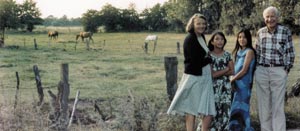Willibald Jentschke had a significant influence on the course of my early scientific career for which I will always be grateful.

In March 1963, I had just obtained my PhD from the University of Michigan and came to CERN where I had the good fortune to start working with Giuseppe Cocconi, Klaus Winter, Gustav Weber and Marcel Vivargent. After returning to the US, I worked with Leon Lederman at Columbia University and also wrote a paper in quantum electrodynamics with Stanley J Brodsky on higher-order Bethe-Heitler pairs.
At that time, a very important experimental result was announced at the Cambridge Electron Accelerator (CEA), which showed a large violation of first-order quantum electrodynamics (QED). In this experiment, the yield of wide-angle electron-positron pairs produced in the reaction γ + carbon → e+ + e– + carbon was measured in order to test the validity of QED at small distances. This experiment generated a great deal of interest and was at the centre of discussions in the community of high-energy physicists. My previous work with Stan Brodsky spurred my interest in this result and compelled me into redoing this experiment. Klaus Winter introduced me to Prof. Jentschke, director-general of the Deutsches Elektronen-Synchrotron (DESY) in Hamburg, and this proved to be a major event in my career as an experimental physicist.
As a young physicist, I had never proposed nor led an experiment. My previous work at CERN and my PhD thesis (under the directions of Lawrence W Jones and Martin Perl) were on high-rate πp and pp interactions. I had no experience in the difficulty of measuring rare e+e– with intense (≅1011 equivalent quanta per second) photons on nuclear targets, which always produced large amounts of π pairs. However, together with Arthur J S Smith, Ulrich J Becker and the late Peter Joos, we designed a detector that was quite different from the CEA design. After a long conversation in which he asked me many questions on backgrounds, acceptance, electronics, trigger and experimental redundancies, Jentschke decided to support our carrying out this experiment at DESY. Thus began my career on the study of lepton pairs, including tests of electrodynamics, photoproduction and leptonic decays of vector mesons at DESY, which ultimately led to the discovery of the “J” particle at Brookhaven.
A friend and mentor
Jentschke showed an abiding interest in our work and often visited us on weekends or late at night to discuss our results. He also introduced me to many leading German physicists – Wolfgang Paul, Herwig Schopper, Max Born and others. He often invited my family and me to his home when we were not taking data. From discussions with him, I learned of the tremendous efforts he had made in founding DESY and his desire to make it a world-class laboratory. His wisdom and inspiration were of great help to me, such as when he advised me to accept an offer from MIT where I have worked ever since. At that time, I had received many attractive offers. MIT’s was the only one that was not tenured, but Willi’s advice turned out to be correct in the long run.
I remember Willi Jentschke as a person of insight and dedication to physics and I will always be grateful for his support and encouragement.





